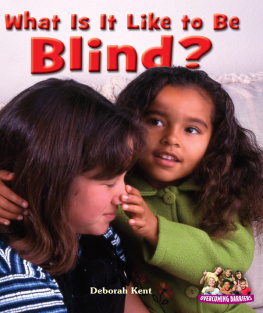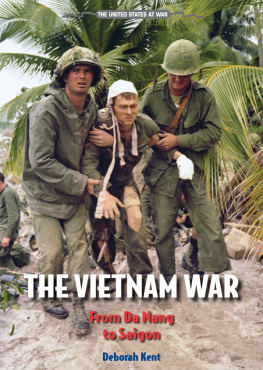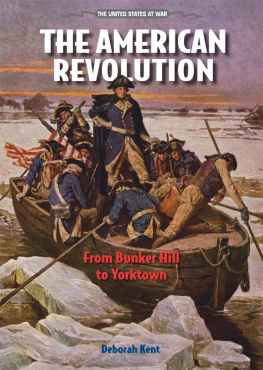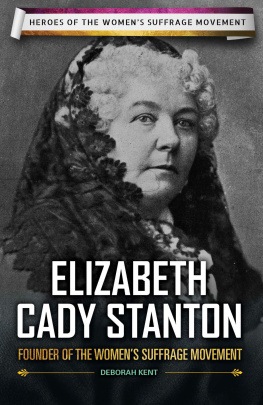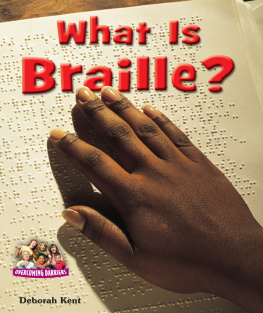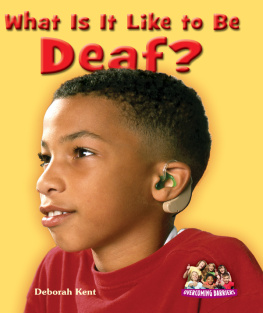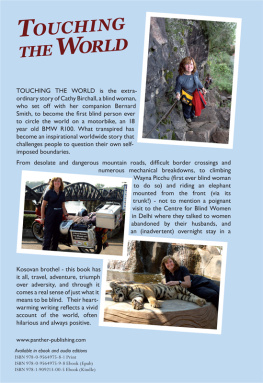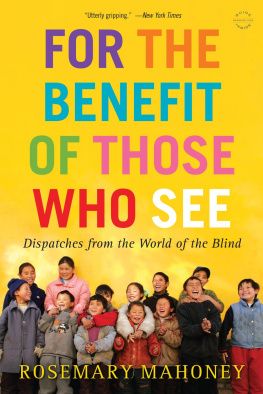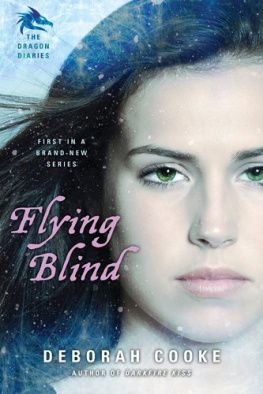SEEING THE WORLD BY SOUND AND TOUCH
People who are blind use their senses of touch and hearing to sense the world around them. Read about the tools they use, including canes and Seeing Eye dogs, to travel and be independent. First-hand stories of children who are blind help readers get a personal look at some kids who see the world in a different way.
Read first-hand experiences of blind children around the world who have overcome their physical limitation of not being able to see and who embrace life to the fullest.
Teresa Lacy, Director
Alabama Instructional Resource Center for the Blind
Alabama Institute for Deaf and Blind
Young readers will learn what life is like for blind and deaf people. These easy-to-read books will help young readers understand how some physical challenges can be overcome.
Allan A. De Fina, PhD, Series Literacy Consultant
Dean, College of Education/Professor of Literacy Education
New Jersey City University
Past President of the New Jersey Reading Association
About the Author
Deborah Kent grew up in Little Falls, New Jersey, where she was the first blind student to attend the public school. She drew upon her experiences as a mainstreamed blind student when she wrote her first young-adult novel, Belonging. Ms. Kent has written more than twenty novels and numerous nonfiction books for children and teens. Ms. Kent also edits the quarterly magazine Future Reflections, which is written for parents and teachers of blind children.

Image Credit: Courtesy of Zina Lewis
MarCh Daughtry loves to do everything that other teenagers doshop, listen to music, and think about her future.
When she was in fifth grade, MarCh Daughtry was on TV. She had won a prize in a contest for children who read Braille. MarCh read aloud on camera from a Braille book. She showed how she used a computer that spoke the words on the screen. The reporter explained that MarCh had earned straight As three years in a row. MarCh hoped that her story would show people that blind children can be successful when they go to regular schools.
Today MarCh is thirteen and in eighth grade. She lives in Virginia. She is interested in all animals, especially pandas and black leopards. She enjoys listening to music and shopping for clothes. When she goes out she uses her long white cane. The cane warns her of steps, poles, and other things in her path.
MarCh loves to read. She has enough sight to read print when the letters are very large. However, she finds reading Braille much faster and easier. Her favorite books are novels in the Harry Potter and Twilight series.
Braille is a method of reading by touch. It is used by blind people all over the world. The Braille code is made up of patterns of dots that form letters, numbers, and punctuation marks. Blind people read by moving their fingers lightly across the Braille lines.

Image Credit: Courtesy of Zina Lewis
MarCh uses her white cane to check the ground around her when she goes out. This way she does not trip over things.

Image Credit: The Herald, Dan Bates
Books in Braille have raised dots for letters and punctuation. It is easy to use your fingers to feel the bumps and read the book if you know the Braille code.
If you can see, you probably think it would be very scary to be blind. Maybe youve tried wearing a blindfold or walking around with your eyes closed. You were afraid of tripping or bumping into things. You imagine that being blind must be like living in the dark all the time.
However, blindness is not frightening to a person who is blind. Without sight, a person learns new ways to use the senses of touch and hearing. Blind people find ways to do almost everything.

Image Credit: Press Association via AP Images
Some blind people use Seeing Eye dogs to help them move around obstacles.
People with normal sight have 20/20 vision. They can see at twenty feet what the average person sees at that distance. People with vision of 20/200 or less are legally blind. When people have 20/200 vision, they see at twenty feet what most people can see from two hundred feet away.
Most blind people have some sight. They may be able to see movement, color, or large objects. Some blind people can tell the difference between light and dark. Blind people may have trouble seeing if lighting is too bright or not bright enough. Their eyes may get tired faster, too. Blind people may be able to read large print, but find that their eyes get tired after the first few pages. About one of every ten blind people is totally blind. A totally blind person cannot see anything at all.
Many devices help people with low vision use the sight they have. Strong lenses called magnifiers make everything look larger. Computer programs can make the text and images larger on the screen.
Blind people face a variety of challenges. The world is set up for people who can see. Printed menus and street signs, computer graphics, and the labels on packages all are meant to be read by sight. Sight is needed for driving a car.

Image Credit: Don Petersen
This girl reads text on a computer screen with the help of magnifying glasses. The glasses make everything bigger.
Despite these challenges, blind people find many ways to live full and busy lives. Although blind people cannot read print, they read Braille, listen to audiobooks, or use scanning technology. They travel using guide dogs or long white canes, and take trains or buses to get where they want to go.

Image Credit: Carlos Osorio
Instead of using guide dogs, some blind people use miniature horses. These horses are specially trained to help people get around during their day.
Because sighted people may think blindness is scary, they have a hard time understanding how blind people live their lives. Sometimes sighted people think blind people are helpless. They try to keep blind people from doing things that they think will be hard or dangerous for them.
Blind people can use electronic scanners that turn print into computerized speech. Some scanners are the size of copying machines. Others are small enough to carry in a purse or backpack.

Image Credit: WAN XIANG/Xinhua/Landov
This man is reading a book with the help of a scanner. The scanner reads the text aloud so he can hear it.

